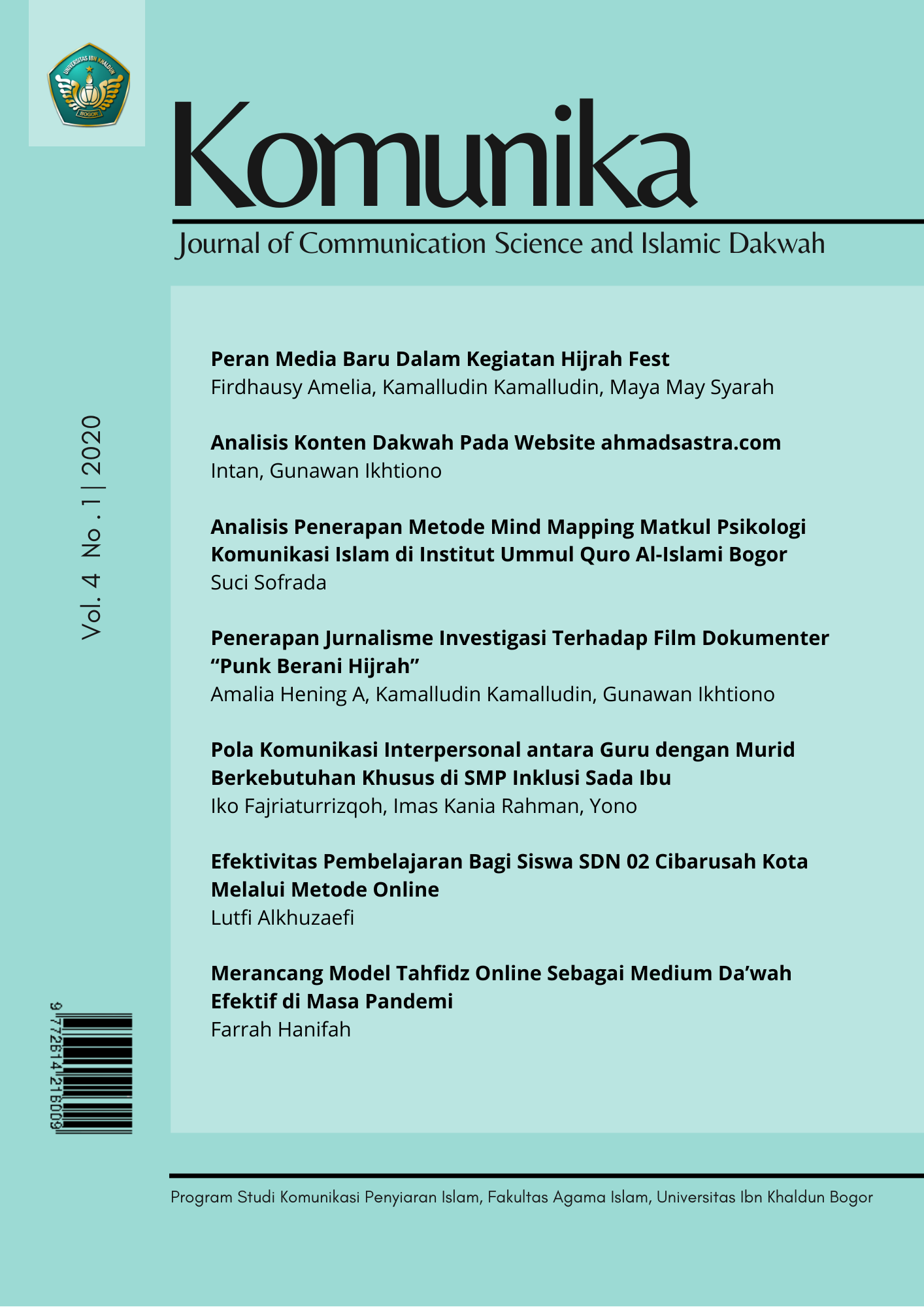Akurasi Antara Isi Siaran Pers Dengan Pemberitaan Media Online Nasional Periode 2018 (Analisis Isi Siaran Pers Dpp Organda)
DOI:
https://doi.org/10.32832/komunika.v2i2.4641Abstract
The method used by quantitative content analysis authors, where the authors analyze the contents of the press release of the Central Board of Land Transport Organizations (DPP ORGANDA) period 2018 related to online media coverage calculated quantitatively for each frequency distribution of each research material based on title type categories. lead type category, 5W + 1H completeness category in content, and news value element category. The sample in the study was determined based on matching between press releases and news published by national online media, each 10 (ten) samples. The research coder consisted of two online journalists and one staff member at Organda DPP, who were given research material, coding sheets, and definitions of the same category. The coding results in a reliability coefficient of 0.88 (80%). Based on the results of the study, the suitability of the Organda DPP press release was obtained with the news loaded from the title type category by 80%, the lead type category by 60%, the 5W + 1H element completeness category by 80%, the news value element category by 90%. The discussion, it can be concluded that if public relations practitioners have the skills to write a press release, pay attention to the rules and basic patterns of press release writing, and write press releases like journalists write news, then it is likely that the press release can be published in mass media, especially the media national online which is also supported by media relations that is well established.
References
Abdullah, Aceng. (2014). Press relations, kiat berhubungan dengan media massa. PT Remaja Rosdakarya.
Bivins, Thomas. (1999). Public relations writing, the essential of style and format. NTC/Contemporary Publishing Group.
Bulaeng, Andi. (2018). Metode penelitian komunikasi kontemporer. Andi.
Depdiknas. (1991). Kamus Besar Bahasa Indonesia Edisi Ke- 2. Balai Pustaka.
Effendy, Onong Uchjana. (1993). Human relations dan public relations. CV Mandar Maju.
Ermanto. (2005). Wawasan jurnalistik praktis. Cinta Pena.
Iriantara, Yosal. (2005). Media relations, konsep, pendekatan dan praktik. Simbiosa Rekatama Media.
Jefkins, Frank. (1992). Public relations. (Edisi ke-4). Erlangga.
Kasali, Rhenald. (2000). Manajemen public relations, konsep dan aplikasi di Indonesa. PT Pustaka Utama Grafiti.
Kusumaningrat, Hikmat, & Purnama Kusumaningrat. (2005). Jurnalistik teori dan praktek. PT Remaja Rosdakarya.
Rakhmat, Jalaluddin. (2004). Metode penelitian komunikasi. PT Remaja Rosdakarya.
Ritonga, Jamiluddin. (2004). Riset Kehumasan. PT Gramedia Widiasarana Indonesia.
Ruslan, Rosady. (2002). Manajemen humas & komunikasi, konsepsi & applikasi. PT RajaGrafindo Persada.
Sendjaja, S. Djuarsa. (1994). Teori Komunikasi. Universitas Terbuka.
Soehoet, Hoeta, A.M. (2003). Dasar-dasar jurnalistik. Yayasan Kampus Tercinta IISIP.
Soemirat, Soleh, & Elvinaro Ardianto. (2002). Dasar-dasar public relations. PT Remaja Rosdakarya.
Sumadiria, Haris. (2005). Jurnalistik Indonesia, menulis berita dan feature. PT Remaja Rosdakarya.
Downloads
How to Cite
Issue
Section
License

Komunika: Journal of Communication Science and Islamic Dakwah disebarluaskan di bawah Lisensi Creative Commons Atribusi-BerbagiSerupa 4.0 Internasional.










2.png)



.png)

